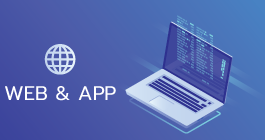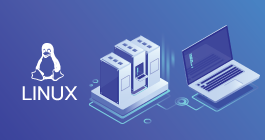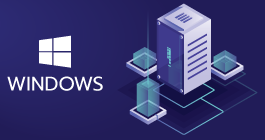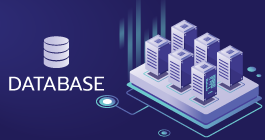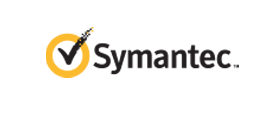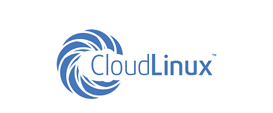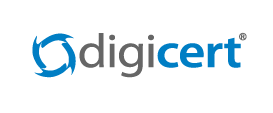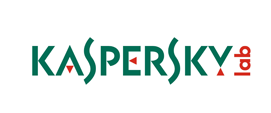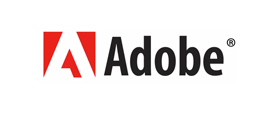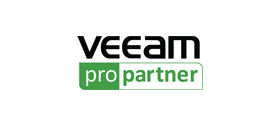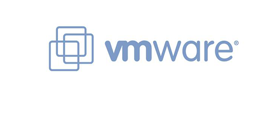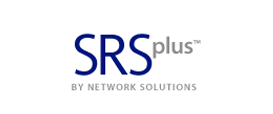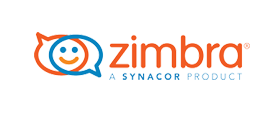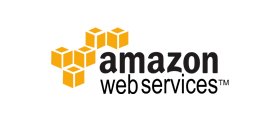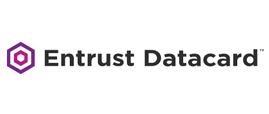-
Welcome to My Website
This is a text box. Write your own content here. This is an excellent place for you to add a paragraph.
Netway Support Center
เราพร้อมบริการคุณ ตลอด 24 ชั่วโมง
Payment & Invoices
Products Knowledge










Zendesk




Other Cloud Products
Technical Knowledge
Website/Install Application & FTP
Linux Technical Knowledge
Windows Technical Knowledge
Database
Blog list (8)
Beware of These 2024 Emerging Technology Threats
Beware of These 2024 Emerging Technology Threats" ระวัง! อัพเดทภัยคุกคามเทคโนโลยีเกิดใหม่ในปี 2024 "ค่าความสูญเสียจากภัยคุกคามทางเทคโนโลยีทั่วโลก ในปี 2023 คือ 4.45 ล้านดอลลาร์สหรัฐฯ เรื่องนี้ไม่ใช่เรื่องไกลตัว อีกต่อไป มันอาจเกิดได้ทุกเมื่อกับคุณหรือธุรกิจของคุณ และแน่นอนว่ามีวิธีการใหม่ๆ เกิดขึานทุกวัน🚩 ติดตามให้ทันกับภัยคุกคามใหม่ๆ ที่มาแน่ในปี 2024🔸 Data Poisoning Attacks 🔸 5G Network Vulnerabilities 🔸 Quantum Computing Vulnerabilities 🔸 Artificial Intelligence (AI) Manipulation🔸 Augmented Reality (AR) and Virtual Reality (VR) Exploits 🔸 Ransomware Evolves 🔸 Supply Chain Attacks Persist🔸 Biometric Data Vulnerability🔸 Advanced Phishing Attacksหากคุณต้องการคำแนะนำเรื่องป้องกัน Cyber Attack หรือเรื่องใดๆ เกี่ยวกับคลาวด์ สามารถติดต่อ Netway Communication ได้ 24 ผ่านช่องทางเหล่านี้Contact Netway Communication (24x7) 📲: 02 055 1095 📧: support@netway.co.th 👨💻Web chat: [[URL]]/ 💙Facebook Messenger: @netway.official https://www.facebook.com/netway.official 💚Add Line ID: @netway https://bit.ly/line-netway#TechThreats #Cybersecurity #StaySafeOnline #TechSecurity #OnlineSafety #CybersecurityAwareness The global cost of a data breach last year was USD $4.45 million. This is an increase of 15% over three years. As we step into 2024, it's crucial to be aware of emerging technology threats. Ones that could potentially disrupt and harm your business. Technology is evolving at a rapid pace. It’s bringing new opportunities and challenges for businesses and individuals alike. Not all technology is benign. Some innovations can pose serious threats to our digital security, privacy, and safety.In this article, we’ll highlight some emerging technology threats to be aware of in 2024 and beyond. Data Poisoning Attacks Data poisoning involves corrupting datasets used to train AI models. By injecting malicious data, attackers can skew algorithms' outcomes. This could lead to incorrect decisions in critical sectors like healthcare or finance. Some actions are vital in countering this insidious threat. These include protecting training data integrity and implementing robust validation mechanisms.Businesses should use AI-generated data cautiously. It should be heavily augmented by human intelligence and data from other sources. 5G Network Vulnerabilities The widespread adoption of 5G technology introduces new attack surfaces. With an increased number of connected devices, the attack vector broadens. IoT devices, reliant on 5G networks, might become targets for cyberattacks. Securing these devices and implementing strong network protocols is imperative. Especially to prevent large-scale attacks.Ensure your business has a robust mobile device management strategy. Mobile is taking over much of the workload Organizations should properly track and manage how these devices access business data. Quantum Computing Vulnerabilities Quantum computing, the herald of unprecedented computational power, also poses a threat. Its immense processing capabilities could crack currently secure encryption methods. Hackers might exploit this power to access sensitive data. This emphasizes the need for quantum-resistant encryption techniques to safeguard digital information. Artificial Intelligence (AI) Manipulation AI, while transformative, can be manipulated. Cybercriminals might exploit AI algorithms to spread misinformation. They are already creating convincing deepfakes and automating phishing attacks. Vigilance is essential as AI-driven threats become more sophisticated. It demands robust detection mechanisms to discern genuine from malicious AI-generated content. Augmented Reality (AR) and Virtual Reality (VR) Exploits AR and VR technologies offer immersive experiences. But they also present new vulnerabilities. Cybercriminals might exploit these platforms to deceive users, leading to real-world consequences.Ensuring the security of AR and VR applications is crucial. Especially to prevent user manipulation and privacy breaches. This is very true in sectors like gaming, education, and healthcare.Ransomware EvolvesRansomware attacks have evolved beyond simple data encryption. Threat actors now use double extortion tactics. They steal sensitive data before encrypting files. If victims refuse to pay, hackers leak or sell this data, causing reputational damage.Some defenses against this evolved ransomware threat include: • Robust backup solutions • Regular cybersecurity training • Proactive threat huntingSupply Chain Attacks Persist Supply chain attacks remain a persistent threat. Cybercriminals infiltrate third-party vendors or software providers to compromise larger targets. Strengthening supply chain cybersecurity is critical in preventing cascading cyber incidents. Businesses can do this through rigorous vendor assessments, multi-factor authentication, and continuous monitoring. Biometric Data Vulnerability Biometric authentication methods, such as fingerprints or facial recognition, are becoming commonplace. But users can't change biometric data once compromised, like they can passwords. Protect biometric data through secure encryption. Ensure that service providers follow strict privacy regulations. These are paramount to preventing identity theft and fraud. Advanced Phishing Attacks Phishing attacks are one of the oldest and most common forms of cyberattacks. These attacks are becoming more sophisticated and targeted thanks to AI. For example, hackers customize spear phishing attacks to a specific individual or organization. They do this based on online personal or professional information.Another example is vishing attacks. These use voice calls or voice assistants to impersonate legitimate entities. They convincingly persuade victims to take certain actions.Ongoing employee phishing training is vital. As well as automated solutions to detect and defend against phishing threats. Tips for Defending Against These ThreatsAs technology evolves, so do the threats that we face. Thus, it’s important to be vigilant and proactive. Here are some tips that can help:• Educate yourself and others about the latest technology threats. • Use strong passwords and multi-factor authentication for all online accounts. • Update your software and devices regularly to fix any security vulnerabilities. • Avoid clicking on suspicious links or attachments in emails or messages. • Verify the identity and legitimacy of any callers or senders. Do this before providing any information or taking any actions. • Back up your data regularly to prevent data loss in case of a cyberattack. • Invest in a reliable cyber insurance policy. One that covers your specific needs and risks. • Report any suspicious or malicious activity to the relevant authorities.Need Help Ensuring Your Cybersecurity is Ready for 2024? Last year’s solutions might not be enough to protect against this year’s threats. Don’t leave your security at risk. We can help you with a thorough cybersecurity assessment, so you know where you stand. Article used with permission from The Technology Press.
11 Ways to Responsibly Get Rid of E-Waste at Your Home or Office
11 Ways to Responsibly Get Rid of E-Wasteat Your Home or Office ✅ แนะนำ 11 วิธีเคลียร์ E-Waste ทั้งที่บ้านและที่ทำงานให้ถูกวิธีและรับผิดชอบต่อสังคม✍️ในโลกที่ทั้งฮาร์ดแวร์และซอฟต์แวร์สลับกันแจ้งเตือนให้เราอัพเกรดอยู่ทุกวัน อุปกรณ์อิเล็กทรอนิกส์ที่เราใช้งานอยู่ต่างก็มี เวลาของมัน และสักวันมันจะกลายเป็น E-Waste หรือขยะอิเล็กทรอนิกส์ ถ้าเราไม่กําจัดมันให้ถูกวิธี และ มีความรับผิดชอบ ก็อาจส่งผลร้ายต่อทั้งสุขภาพและคุกคามสิ่งแวดล้อมที่เราอยู่ได้📌ลองฟัง 11 ไอเดียที่จะช่วยเคลียร์ E-Waste ให้ทั้งที่บ้านเรา และที่ทำงานของเราน่าอยู่ยิ่งขึ้น1. ทําความเข้าใจกับ E-Waste หรือขยะอิเล็กทรอนิกส์ 2. ลด E-Waste หรือขยะอิเล็กทรอนิกส์ 3. สํารวจโปรแกรมการรีไซเคิล 4. ใช้บริการศูนย์รีไซเคิลขยะอิเล็กทรอนิกส์ 5. บริจาคหรือขายอุปกรณ์ที่ยังใช้งานได้อยู่ 6. แยกประเภท และทิ้งแบตเตอรี่แบบต่างๆ แยกกัน 7. ร่วมโครงการรับขยะอิเล็กทรอนิกส์คืนของผู้ผลิต 8. ใช้บริการผู้รีไซเคิลขยะอิเล็กทรอนิกส์ที่ผ่านการรับรอง 9. แชร์ความรู้และมุมมองเรื่อง E-Waste ร่วมกันในที่ทำงานและที่บ้าน 10. นําอุปกรณ์ต่างๆ กลับมาใช้ใหม่ (Recycle) 11. สนับสนุนผู้ผลิตที่มีนโยบายรับผิดชอบเรื่อง E-Wasteถ้าคุณอยากแชร์หรือหาไอเดียเรื่อง E-Waste สามารถติดต่อ Netway Communication ได้ผ่านช่องทางเหล่านี้ได้ตลอด 24 ชม. Contact Netway Communication (24x7) 📲: 02 055 1095 📧: support@netway.co.th 👨💻Web chat: [[URL]]/ 💙Facebook Messenger: @netway.official https://www.facebook.com/netway.official 💚Add Line ID: @netway https://bit.ly/line-netway#Ewaste #RecycleElectronics #Sustainability #ReduceEwaste #CorporateResponsibility #EcoFriendly In our tech-driven world, electronic devices have become indispensable. But with constant upgrades, what happens to the old gadgets? They tend to pile up and eat up storage space. But you can’t just throw them in the trash. E-waste poses a significant environmental threat if not disposed of responsibly.E-waste is a term that refers to electronic devices that are no longer useful or wanted. These include things like: • Computers • Laptops • Smartphones • Tablets • Printers • Cameras • TVs • and moreE-waste can contain hazardous materials. Such as lead, mercury, cadmium, and brominated flame retardants. These can harm the environment and human health if they are not disposed of properly. E-waste comprises about 70% of toxic waste. People only recycle 12.5% of it. So, what can you do to responsibly get rid of e-waste at your home or office? Here are some tips. 1. Understand What Makes Up E-Waste E-waste includes old computers, smartphones, printers, and other electronic devices. It also comprises batteries, chargers, and even cables. Understanding what makes up e-waste is the first step towards responsible disposal.Most people simply aren’t aware of what e-waste includes. This is a big reason that most of it ends up in landfills. Which is not good for us or the environment. 2. Reduce Your E-Waste The next step is to reduce the amount of e-waste you generate in the first place. This means buying only what you need. Also choosing durable and energy-efficient products. As well as extending the lifespan of your devices by repairing them when possible.Before buying a new electronic device, ask if it’s necessary. Can more than one person share a company tablet, for example? In some cases, everyone in a family or office might not need a duplicate device. 3. Explore Recycling Programs Many electronics retailers and manufacturers have recycling programs. Research local options. Retailers often collect old gadgets, ensuring they are recycled or disposed of properly. These programs are convenient and eco-friendly.Here are a couple you can check out: • Best Buy • Staples4. Use E-Waste Recycling Centers E-waste recycling centers specialize in disposing of electronic devices safely. They dismantle gadgets, recycle valuable components, and dispose of hazardous materials responsibly. Locate a certified e-waste recycling center near you for proper disposal.Here are a few sites where you can find recycling centers: • Greener Gadgets • Earth911 • Call2Recycle 5. Consider Donating or Selling Functioning DevicesIf your old devices are still functional, consider donating them. Many charities and schools accept functional electronics. Or you can sell them online through reputable platforms. This gives gadgets a new life and reduces e-waste.Make sure you properly clean data from old devices first. You don’t want someone having access to your online banking app or all your family photos. Keep on reading for tips on doing this properly.6. Dispose of Batteries Separately Batteries, especially rechargeable ones, contain hazardous materials. Many retailers and recycling centers have dedicated bins for battery disposal. Always separate batteries from other e-waste for proper handling. 7. Try Manufacturer Take-Back Programs Several electronic manufacturers offer take-back programs. When you buy a new device, inquire about their disposal programs. Some manufacturers take back old gadgets, ensuring responsible recycling or refurbishment. 8. Opt for Certified E-Waste Recyclers When using e-waste recycling services, choose certified recyclers. Look for certifications like R2 or e-Stewards. These certifications ensure that the recycling process meets high environmental standards. As well as data security protocols. 9. Educate Your Office or Household Awareness is key. Educate your office or household about the importance of responsible e-waste disposal. Encourage everyone to take part and follow proper disposal methods. 10. Repurpose or Upcycle Get creative. You can often repurpose or upcycle old electronics. Turn an old computer monitor into a digital photo frame. Use smartphone parts for DIY projects. Upcycling reduces waste and adds a touch of innovation 11. Encourage Manufacturer Responsibility Support companies that take environmental responsibility seriously. Choose products from manufacturers committed to sustainable practices and responsible e-waste management. Make Sure to Secure Data Before Disposal, Sale, or Donation Before parting with your devices, wipe all data. Otherwise, you could become the victim of cybercrime. It’s not unusual for criminals to troll dumps for old electronics. Remove all traces of your data to keep yourself protected.Use reliable data erasure software. Or consult with an IT professional to securely wipe information from old gadgets. Data security is crucial even in disposal. Get Help Backing Up & Cleaning Devices It’s important to both back up and remove all data from devices before you get rid of them. We can help with expert data migration from the old device to the new one. As well as thorough data cleaning to ensure all information is removed. Article used with permission from The Technology Press.
7 Transformative Technology Trends Changing the Way We Work
7 Transformative Technology Trends Changing the Way We Work 7 เทรนด์เทคโนโลยีปฏิวัติการทำงานในปี 2024 ให้สุดปัง 📌แนะนำ 7 เทรนด์เทคโนโลยีที่ควรติดตาม และปรับตัวเพื่อการทำงานที่สร้างสรรค์ ทันสมัย และได้ประโยชน์สูงสุดในปี 2024 อันได้แก่1. Artificial Intelligence AI หรือ ปัญญาประดิษฐ์2. Remote Collaboration Tools เครื่องมือการทำงานจากหลายจุดร่วมกัน 3. Hybrid Work Model รูปแบบการทำงานแบบไฮบริด 4. Web 3.0: The Decentralized Internet Web 3.0 และรูปแบบการใช้งานอินเทอร์เน็ตแบบไม่พึ่งพาโฮสต์เจ้าใดเจ้าหนึ่ง 5. Internet of Things (IoT) in the Workplace การที่อุปกรณ์ต่าง ๆ ที่อยู่รอบตัวเราเชื่อมต่อเข้าด้วยกันด้วยกันผ่านระบบ Internet6. Augmented Reality (AR) and Virtual Reality (VR) Virtual Reality (VR) คือ เทคโนโลยีที่สร้างสภาพแวดล้อมเสมือนขึ้นมาใหม่ เพื่อดึงให้ผู้ใช้งานออกจากโลกความจริง ส่วน Augmented Reality (AR) คือ การรวบรวมหรือผสานระหว่างสภาพแวดล้อมจริง ณ ขณะนี้ เข้ากับวัตถุที่จำลองขึ้นมา 7. Advanced Cybersecurity ความปลอดภัยทางไซเบอร์ระดับสูงDigital Transformation ไม่ใช่เรื่องไกลตัวให้เราแนะนําเครื่องมือดีๆ เทคโนโลยีที่เหมาะสมให้คุณโดยสามารถติดต่อเราได้ผ่านช่องทางเหล่านี้Contact Netway Communication (24x7) 📲: 02 055 1095 📧: support@netway.co.th 👨💻Web chat: [[URL]]/ 💙Facebook Messenger: @netway.official https://www.facebook.com/netway.official 💚Add Line ID: @netway https://bit.ly/line-netway #FutureOfWork #TechTrends #Innovation #TechInnovation #DigitalFuture Technology is reshaping the world of work at an unprecedented pace. From artificial intelligence to web3, from the metaverse to the hybrid work model. We are witnessing a series of technological revolutions. They are transforming how we communicate, collaborate, create, and innovate.Let’s explore some of the most impactful technology trends that are changing the way we work in 2024 and beyond.1. Artificial Intelligence AI and Generative AI are not just buzzwords. They are transforming the workplace. These technologies enable automation, allowing teams to handle mundane tasks more efficiently. They free up human resources for more creative and strategic endeavors. AI is not a new concept, but it has become more powerful and accessible in recent years. This is thanks to advances in computing power, data availability, and algorithm development. Artificial intelligence is now augmenting and automating various aspects of work. This includes data analysis, customer service, image creation, product design, and more. But AI also poses significant challenges and risks. This includes ethical dilemmas, social implications, and workforce displacement. Thus, it's essential to adopt responsible and human-centric approaches to AI. As well as ensure that workers have the skills and support to adapt to the changing nature of work.2. Remote Collaboration ToolsAdvanced collaboration tools have facilitated the rise of remote work. These include video conferencing, project management software, and cloud-based document sharing platforms. This technology empowers teams to collaborate seamlessly from different corners of the globe. These tools break down geographical barriers, allowing for efficient teamwork and real-time communication.3. Hybrid Work Model The hybrid work model is a term that describes the combination of remote and in-office work. This is not a new concept, but it has become more prevalent in the wake of the Covid-19 pandemic.The hybrid work model offers many benefits, such as: • Increased productivity • Reduced costs • Improved work-life balance • Enhanced employee satisfaction • Improved employee retentionThe hybrid work model is transforming the way we work. It requires workers to have new skills, tools, and strategies. For example, hybrid work requires workers to have several capabilities to work effectively. These include strong digital literacy, communication, collaboration, and self-management skills.4. Web3: The Decentralized Internet Web3 is a term that refers to the next generation of the internet. An internet based on decentralized technologies, such as: • Blockchain • Cryptocurrencies • Smart contracts • Peer-to-peer networksWeb3 aims to create a more open, transparent, secure, and democratic internet. One where users have more control over their own data, identity, and digital assets. Web3 also enables new forms of collaboration and value creation. This includes: • Decentralized autonomous organizations (DAOs) • Non-fungible tokens (NFTs) • Decentralized finance (DeFi) • Social tokensWeb3 is transforming the way we work. It's creating new business models, platforms, and communities. These are designed to be more inclusive, participatory, and innovative.Web3 has the potential to generate $49.10 billion in economic value by 2030. 5. Internet of Things (IoT) in the Workplace IoT devices are creating smart and optimized workplaces. This includes smart thermostats that adjust office temperatures based on occupancy. As well as wearable devices that track employees' health and productivity. This connectivity enhances efficiency and reduces energy consumption. It also provides valuable data for informed decision-making.6. Augmented Reality (AR) and Virtual Reality (VR) AR and VR technologies are revolutionizing training, design, and customer interactions. In the workplace, AR and VR offer immersive training experiences. These allow employees to learn complex tasks in a simulated environment. These technologies are also used in product design. This enables professionals to visualize and modify prototypes in real time. This drives faster innovation cycles. 7. Cybersecurity Advancements As digital technologies advance so do cybersecurity threats. Businesses are investing in advanced cybersecurity measures to protect sensitive data. As well as ensuring the privacy of employees and customers.These innovations include biometric authentication and AI-driven threat detection. Cybersecurity advancements are crucial. They help companies safeguard digital assets and maintain trust in the online workspace. The Impact on the Future of Work These transformative technology trends are not just fleeting novelties. They are shaping the future of work. Businesses that adapt and embrace these technologies gain a competitive edge.Remote collaboration tools foster flexibility and work-life balance, appealing to the modern workforce. AI and automation enhance efficiency, reducing errors and operational costs.IoT creates intelligent workspaces, enhancing employee well-being and environmental sustainability. AR and VR drive innovation, offering new ways to engage both employees and customers.Challenges and Considerations While these technologies bring immense benefits, they also pose challenges. Workforce training is essential to ensure employees can leverage these tools effectively. Additionally,there are ethical considerations about data privacy and security. As well as the impact of automation on employment. Striking a balance between technological advancement and human welfare is crucial. Especially in this transformative era.Let Us Guide You Successfully Through Digital TransformationNavigating new technologies can be complex. There are pitfalls that can waste time and money. Avoid this by working with our team of experts. We can help you customize your transformation to fit your business goals. Article used with permission from The Technology Press.
New! Create videos and images at work with Clipchamp and Designer
New! Create videos and images at work with Clipchamp and Designer In a world where videos and images have become a critical part of how we express ideas and consume information, it only makes sense that everyone in an organization is empowered to embrace this powerful form of communication. With Microsoft Clipchamp and Microsoft Designer, we are democratizing video and image creation. By creating simple and intuitive user experiences, enhanced by AI, and complemented by the Microsoft 365 apps and services, we are making it easy for anyone to confidently harness the power of videos and images in their work, regardless of skill and experience. After beginning this journey in the consumer space with tens of millions of users worldwide, we are thrilled to now include Clipchamp and Designer in our Microsoft 365 commercial offerings.Clipchamp now available to commercial customersWhether you need to explain a process to your teammates, onboard new employees, send an update to clients, or level up your organization’s newsletters, now you can turn to Clipchamp to deliver an impactful message through video at work. The commercial rollout process which began over the summer is complete and we are proud to announce Clipchamp is now generally available to anyone licensed for Microsoft 365 Enterprise (E3 and E5) and Business (Standard, Premium) suites.Clipchamp's simple user interface and rich array of features make it easy to create professional-looking videos at work.We have developed these tools in close partnership with many customers, including Advent Health, Amadeus, Murex, and Renaissance, which have helped us ensure that Clipchamp meets the unique needs of companies and organizations. With Clipchamp, their organizations are already seeing evidence of sparked creativity, improved communications, and more efficiency across their user base.Advent Health, Amadeus, Murex, and Renaissance have all been early adopters of Clipchamp.Clipchamp has an array of features which make it quick and easy to create and share professional-looking videos in minutes. As part of Microsoft 365, Clipchamp is built on OneDrive and SharePoint and works seamlessly with your other everyday Microsoft productivity apps. The videos you export from Clipchamp can be shared through Microsoft Stream, embedded and played in Microsoft Teams, in emails with Outlook, and on Microsoft Viva Engage, making it easy for you to incorporate videos in your work. It’s easy to get started with Clipchamp from the Apps page at microsoft365.com. In 2024, Clipchamp will become available as a Windows app as well for Microsoft 365 Enterprise and Business licenses. Introducing Clipchamp PremiumNext month we are introducing Clipchamp Premium which offers additional value for creating high-quality videos with ease and efficiency. Starting December 1, 2023, commercial customers will be able to purchase Clipchamp Premium to access additional features including:4K exports – Crystal-clear UHD resolution up to 30fps helps your videos to look their bestBrand kit – Your company’s specific fonts, colors, and logos loaded into Clipchamp make it easy to align with your organization’s branding and ensure consistency across projects.Premium stock content – Top-tier images, video, and audio help you produce professional-looking videos that resonate with people.Advanced analytics with Microsoft Stream – Visibility to crucial video-level metrics help you engage and improve your output by tracking your user behavior and performance for your video.Clipchamp Premium includes features such as Brand kit, 4k exports, and Premium stock content.Clipchamp Premium will be available as a Microsoft 365 Enterprise or Business add-on with an introductory price of $5 per user per month* through June 30, 2024. After that, the price will be $7 per user per month.* Next month Clipchamp will be offered as a standalone license for non-Microsoft 365 subscribers. The Clipchamp Standard SKU will be $3 per user per month. The Clipchamp Premium standalone SKU will have an introductory price of $7 per user per month* through June 30, 2024, and $10 per user per month* thereafter.Table with Clipchamp Premium pricing.Designer app integrations now in Preview for commercial customersWith Designer, all you need is an idea to create amazing images and designs. Just simply describe what you want to create and Designer uses AI powered by Dall-E 3 to generate great looking designs. You can even incorporate your own images, add text, and customize the results with simple commands to ensure you get just the image you’re looking for. It’s a tool anyone can use with confidence to add the right visual impact to their communications, presentations, and announcements. Designer is coming first to commercial customers through integrations in various Microsoft 365 apps so users can create and customize images within the flow of work. Designer will initially be available as a Preview to users licensed for the Microsoft 365 Enterprise (E3 and E5) and Business (Standard and Premium) suites through the following integrations, with more on the way in the coming months: Designer in Edge is available now.Designer in Teams for creating announcement banners will become available in the coming weeks.Designer in Copilot for use in Word, PowerPoint and Whiteboard will be available by the end of 2023.A Preview of the Designer app will become available to enterprise and business customers in the coming months, followed by a general release later next year. Commercial customers interested in participating in a private preview of the app can provide their contact information through this form and we will follow up with you about potential inclusion in that release.Designer in Edge makes it easy to create compelling designs within the flow of work.What makes Clipchamp and Designer different?With visual content becoming more and more prevalent in today’s world, we know there are an increasing number of tools to choose from. But we believe that Microsoft 365 has a unique opportunity to make video and image creation a common part of how people work in three key ways:As part of Microsoft 365, Clipchamp and Designer are easy to find and right where you need them – whether that’s through microsoft365.com or through integrations in the apps where you utilize visual content.We’re focused on making it easy for anyone to use these tools. With the power of AI and intuitive user interfaces, these tools simplify complex tasks, save time by automating work, and stimulate creative thinking. Creative work that once seemed intimidating and complex now feels simple and achievable.We’re tailoring Clipchamp and Designer to the needs of businesses and organizations. With features that ensure consistent brand alignment, enable collaboration among colleagues, and are backed by the security and compliance you’d expect with Microsoft 365, these are tools you can count on for work.What’s next?We have plans to drive innovation within Microsoft 365, including new horizons made possible by AI. Check out this video to get a sense of our vision for what video and image creation in Microsoft 365 will look like: Video Learn more and get startedCheck out our Visual Content Creation On-Demand Session from Ignite to learn more and see demos of the products themselves.Start using Clipchamp at work.To use Designer in Edge, enable the Designer app by clicking on the + sign in the side bar on the right.Get a sense of the app experience at https://designer.microsoft.com using your personal Microsoft Account (not enabled for enterprise or business accounts at this time).No matter what you are creating or why, Microsoft 365 makes it easy for you. Start using Clipchamp and Designer at work – you’ll be amazed by what you can create.
Microsoft acquires Clipchamp to empower creators
Microsoft acquires Clipchamp to empower creators Storytelling is as old as humanity. It defines us, it binds us together, it allows us to share knowledge, it enables us to educate our young and it’s uplifting when needed. Throughout history we have continuously changed the way we tell stories to create impact. Our ancestors told stories around fires. Later they chiseled them in stones. With the advent of the printing press, we were able to mass-distribute stories and radio, TV and the Internet took storytelling to a yet different level.Today, one of the most powerful ways to tell stories is through video. Videos allow us to experience stories at an emotional level that we don’t experience as frequently with other forms of media. They make us laugh, they make us cry, they make us pause and think, and educate us, or they just entertain us. However, telling a story through video is hard. With every medium we invented we were able to democratize storytelling, and with video we’re only at the beginning of democratizing its creation. Video remains largely a professional and creative domain where stories with impact often touch four or more tools before they are ready for viewers.Clipchamp is an in-browser video creation platform. We are targeting non-professionals and non-creatives, or simply, the other 98% of us. Our mission is to empower anyone to tell stories worth sharing and millions of people around the world are using Clipchamp to create videos and tell their stories.And we are far from done. We are user-centric, product-led and fast learning. This means that our team is spending all their passion and energy in understanding how to make video creationSo why are we joining Microsoft and why now? Startup founders go through different stages from incorporating a business, to hiring the first employees, raising several rounds of fundin and eventually they will try to exit through an acquisition or going public. And while an exit event is the end of a startup journey, it is also the beginning of a new journey. In our case that will be a journey under a Microsoft umbrella.Few companies in tech have the legacy and reach that Microsoft has. We all grew up with iconic Microsoft products and have been using them ever since. Becoming part of Microsoft allows us to become part of a future legacy. Under no other scenario could our future look more exciting than what’s ahead of us now. At Clipchamp we have always said that we’re not suffering from a lack of opportunity, there absolutely is an abundance of opportunity in video. We just need to figure out how to seize it. Inside Microsoft we can approach seizing our opportunity in entirely new ways.There are so many people who have helped us on our journey: investor that invested in us when no one else would, employees that joined us when no one else knew us, journalists that wrote about us when no one else thought we were worth a story and partners in life that never stopped believing in us even when things got tough. They say that a startup journe is like a rollercoaster, the high points feel so much better than elsewhere, and the low points feel so much worse. No one understands this better than founders and their partners. Thank you to everyone who has supported us throughout all these years.We have been committed to empowering anyone to tell stories through video. We will continue to make video creation even easier, more accessible and fun. And we are incredibly excited to be doing this from within Microsoft. Stay tuned! even easier by talking to our users, testing new ways to interact with our platform and always investing into our product first. We have achieved a lot to date and we are incredibly excited about what the future holds for us.Learn more about Clipchamp
-
Domain
-
Hosting
-
Cloud & Managed
-
SSL
-
Email
- เรียนรู้เพิ่มเติม
- Microsoft 365 รุ่นต่างๆ
- Microsoft 365 สำหรับธุรกิจ
- Microsoft 365 สำหรับใช้งานที่บ้าน
- ทดลองฟรี
- G Suite
- เทคนิคลดต้นทุนอีเมล Microsoft 365 มากกว่า 28%
- เทคนิคลดต้นทุนอีเมล G Suite มากกว่า 19%
- Zimbra-Based Email
- Traditional Email by cPanel
- Physical to Cloud Migration
- Exchange Server to Microsoft 365 Migration
- G Suite to Microsoft 365 Migration
- Microsoft 365 to G Suite Migration
- Cloud to Cloud Migration
-
Microsoft
-
Google
-
Marketing
-
Others
-
Blog
-
Microsoft Teams
-
microsoft-365-business-premium
-
test-slide
-
Order
-
Promo
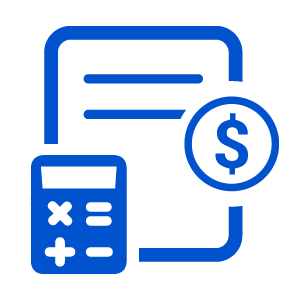




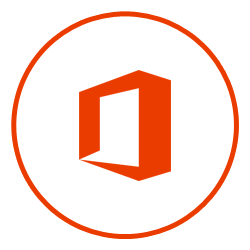


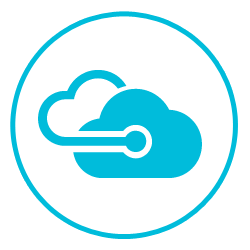



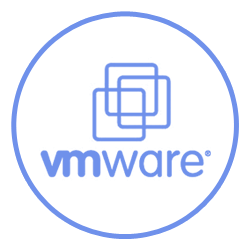









.png)



.png)
